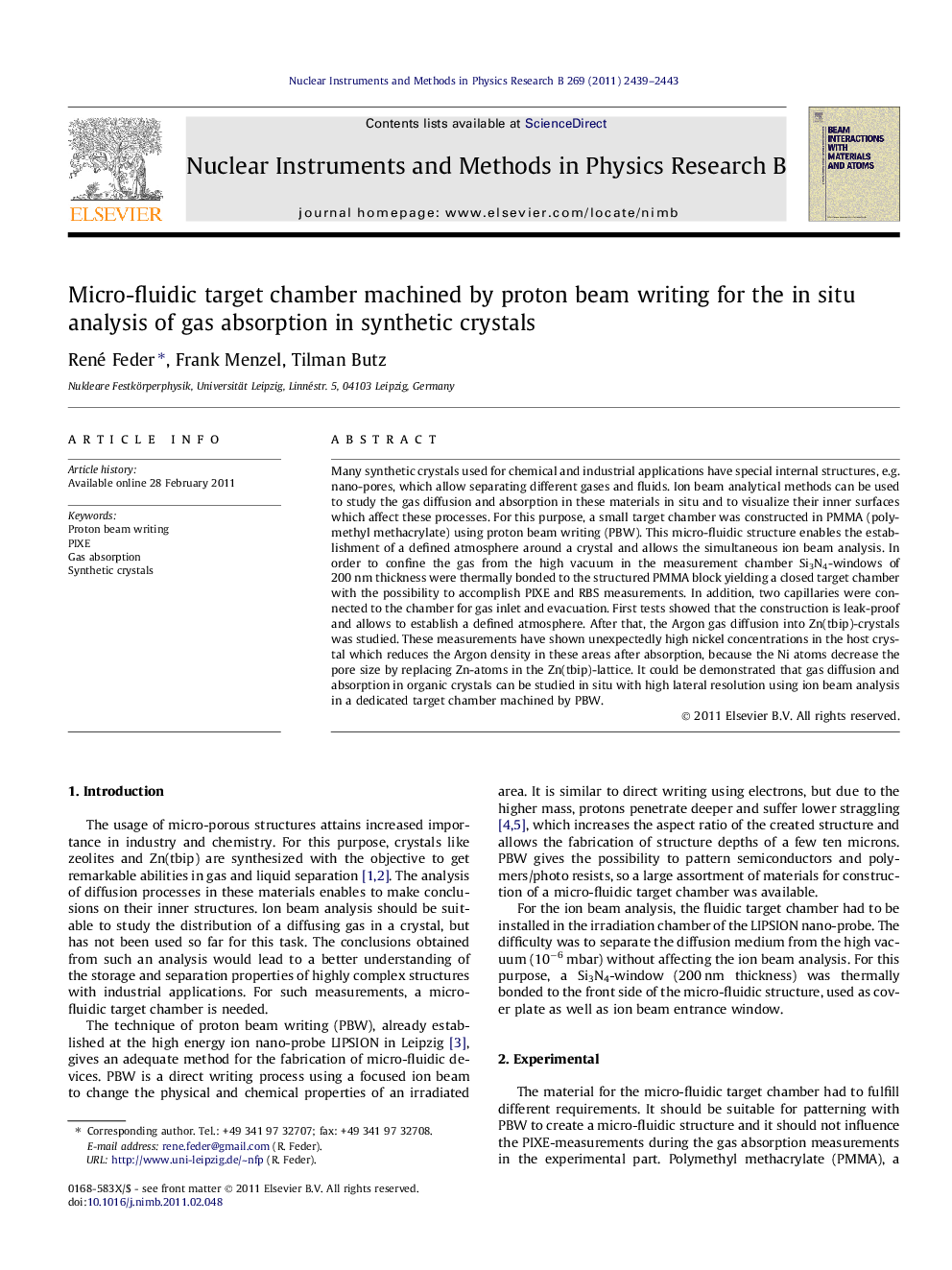| Article ID | Journal | Published Year | Pages | File Type |
|---|---|---|---|---|
| 10674734 | Nuclear Instruments and Methods in Physics Research Section B: Beam Interactions with Materials and Atoms | 2011 | 5 Pages |
Abstract
Many synthetic crystals used for chemical and industrial applications have special internal structures, e.g. nano-pores, which allow separating different gases and fluids. Ion beam analytical methods can be used to study the gas diffusion and absorption in these materials in situ and to visualize their inner surfaces which affect these processes. For this purpose, a small target chamber was constructed in PMMA (polymethyl methacrylate) using proton beam writing (PBW). This micro-fluidic structure enables the establishment of a defined atmosphere around a crystal and allows the simultaneous ion beam analysis. In order to confine the gas from the high vacuum in the measurement chamber Si3N4-windows of 200Â nm thickness were thermally bonded to the structured PMMA block yielding a closed target chamber with the possibility to accomplish PIXE and RBS measurements. In addition, two capillaries were connected to the chamber for gas inlet and evacuation. First tests showed that the construction is leak-proof and allows to establish a defined atmosphere. After that, the Argon gas diffusion into Zn(tbip)-crystals was studied. These measurements have shown unexpectedly high nickel concentrations in the host crystal which reduces the Argon density in these areas after absorption, because the Ni atoms decrease the pore size by replacing Zn-atoms in the Zn(tbip)-lattice. It could be demonstrated that gas diffusion and absorption in organic crystals can be studied in situ with high lateral resolution using ion beam analysis in a dedicated target chamber machined by PBW.
Related Topics
Physical Sciences and Engineering
Materials Science
Surfaces, Coatings and Films
Authors
René Feder, Frank Menzel, Tilman Butz,
